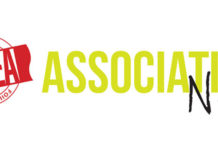By Brittany Willes, editor, PostPress
As COVID-19 continues to have an impact worldwide, companies have faced major challenges when it comes to keeping employees safe, staying in touch with customers and adapting to new regulations. Many previous business habits and best practices have had to transform or change completely in the face of a shifting market. Despite some of the more egregious setbacks, many businesses also have been able to take advantage of new opportunities that might not have otherwise been realized.
For many industries, when the first wave hit, it was a shock to the system – and to the status quo of business operating practices. “I like to think that we continuously challenge our critical thinking as an organization, but there is nothing like a pandemic to make this an urgent priority,” said R. J. Windler, president of Diecrafters, Inc., Cicero, Illinois. Luckily for Windler and Diecrafters, the company already had decent systems in place, allowing it to adjust more easily to shifting conditions. However, that didn’t mean there still weren’t significant adjustments to be made.
“Unfortunately, we had to make changes to facilitate social distancing that negatively impacted production line efficiencies,” Windler noted. “We were quite thankful for the Paycheck Protection Program, which helped us support these inefficiencies so we could keep our team working and better cope with losses caused by slower net production.”
Despite some of the negative changes forced by the pandemic, there have been some unexpected positive impacts as well. While many sectors, such as those reliant on retail, certainly have taken a hit, others, such as packaging and direct mail, have thrived. “Packaging was expected, but direct mail was more of a surprise; although, perhaps it shouldn’t have been,” said Windler. “Highly decorated mail has a much higher response rate. We anticipated that lower-costs mailings, which do not come through our shop, would replace high-end, heavily decorated mailings. To the credit of the marketing folks driving mailing, the opposite has been true. They obviously recognize that it is better to spend more on the vehicle that realizes a considerably higher response as opposed to getting cheap.”
“Business has to go on; companies have to market,” stated Glenn Schuster, president of DATAGRAPHIC, Commack, New York. “As a specialty printer, we service the advertising and marketing industry, and when people want to grow their business, they need to advertise. Online advertising is only good for certain businesses. It’s not as effective. In my mind, there still is great value in getting something physical in the hands of consumers that they can touch and feel and pass around. We deliver a tangible product in the end.”
While DATAGRAPHIC’s printing solutions pipeline still is not where it was pre-COVID-19, other areas of the business have picked up to help offset the difference. “Like a lot of finishers, we started producing some PPE,” he said. “We’ve been diecutting face shields for some local suppliers and that has been helpful. We’ve done more than 300,000 so far. That’s something that has not only been good for business, but it feels good to us, to our employees and to our customers, to know that we are doing our little bit to contribute.”
Diecrafters and DATAGRAPHIC are not the only companies finding new opportunities and new ways of operating – by serendipity or by force – as a result of the pandemic. “It’s been a bit of two-edged sword, something of a wakeup call. We’ve had to have an attitude adjustment,” said Steven Behrmann, co-owner of Behrmann Printing Company, Inc., Southfield, Michigan. “We have used this forced opportunity to fine-tune our labor force. Out of necessity, we were forced to match our labor hours exactly to the workshop.” According to Behrmann, this resulted in the company’s survival but also much stress as many longstanding and loyal employees had to be laid off.
Despite this setback, the business has been able to continue finding ways to succeed. “Fortunately, as our business has evolved, we have a fairly vibrant brokerage component to our sales mix, which has remained strong from a sales perspective,” said Behrmann. “This also has enabled our company the financial security to weather the difficult finishing market.”
Schuster echoed Behrmann in terms of labor challenges and shifting workforce priorities. “One of the major changes for us since the pandemic started is that our people have had to take on more responsibility,” he remarked. “We have people who are doing what was previously the work of 1.5 or two people. It’s definitely been an adjustment as we learn to do more with fewer resources.”
While many business practices have been forced to evolve or outright discontinue, some things will remain the same. “Our industry has been in transition for a number of years,” said Behrmann. “We have concentrated on having the best quality and customer service, and this has not changed.”
For all three companies, one of the things that has changed significantly – and is predicted to continue going forward – is the trend toward remote workforces. “The change in the office paradigm is here to stay,” said Behrmann. “Offices will be smaller; employees will be working from home to a greater extent with much less person-to-person contact. Fewer products that we produce will be required. This will require adaptability to matching your resources to the available sales opportunities. Companies may look to expand products and services offered, such as packaging, digital and specialty short-run packaging or digital foil and diecutting.”
Schuster agreed the change in office paradigm is likely to remain, along with a shift in employee responsibilities. “A lot of bosses are going to realize they made it through the crisis with only one person performing in a role where maybe three were previously. Maybe those three people were only working at 75% capacity and really they only need one or two people in that particular role. I think that’s going to be a big difference as we go forward,” he said.
Virtual meetings also are likely here to stay – perhaps not in the same volume as during the pandemic, but they’ve proven to be a useful tool. “I’m an old timer who values looking people in the face while shaking hands,” remarked Windler, “but make no mistake, there are ways to develop and utilize e-tools to foster relationships that are just around the corner.” Windler also predicted that robotics and automation will continue to push forward, not just as a result of the pandemic but as a general push toward enhanced production efficiencies.
In the end, there can be little doubt the pandemic has altered the ways companies do business. Some of those alterations will prove to be permanent while others simply will be temporary measures. If there is a silver lining to everything that has, and will continue to, happen, it is that many companies and industries have faced their toughest challenges and emerged on the other side.
As Schuster noted, “This was a good lesson for how to manage your business and to realize that anything can happen.”





